Photos: Enceladus, Saturn's Cold, Bright Moon
Secrets of Saturn Moon's Interior Probed by Cassini Spacecraft
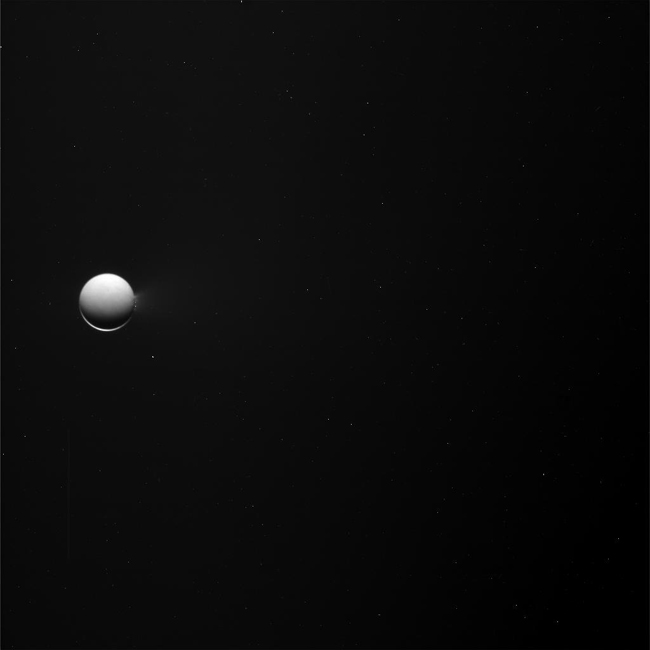
NASA's Casini spacecraft obtained this raw image of Enceladus on April 26, 2010. The camera was pointing toward Enceladus at approximately 946,585 kilometers away, and the image was taken using the CL1 and IR3 filters. This image has not been validated or calibrated. A validated/calibrated image will be archived with the NASA Planetary Data System in 2011.
Cassini Finds Signs of Liquid Water on Saturn's Moon
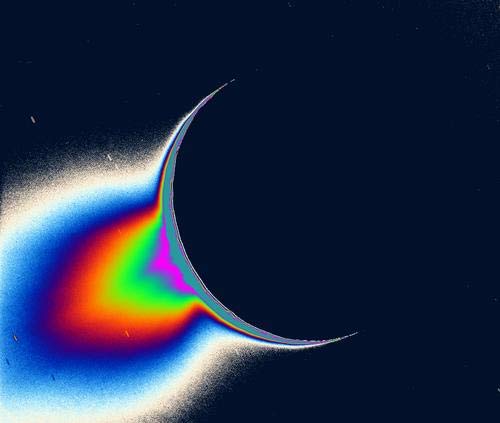
A new image of Saturn's moon Enceladus backlit by the Sun show the fountain-like sources of the fine spray of material that towers over the south polar region. The image is greatly enhanced and colorized.
Geysers Gush from Cracks in Saturn's Moon
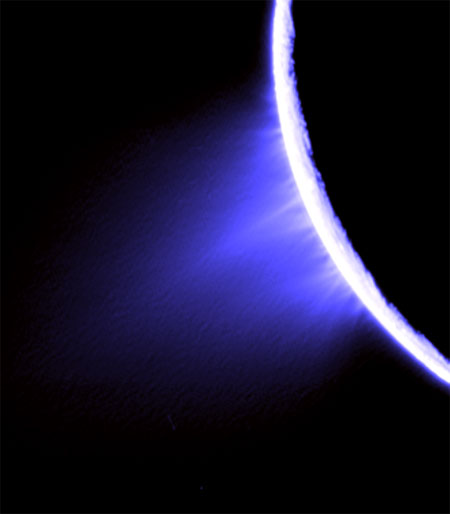
False color Cassini image illustrating the jets of fine icy particles erupting from the south polar region of Enceladus.
Cassini Probe Sets Sights on Icy Saturn Moon
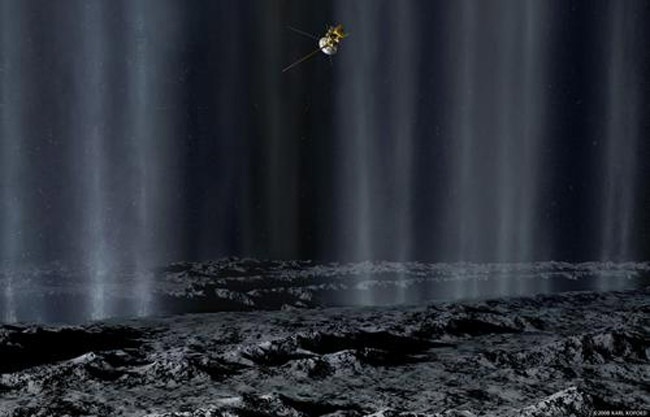
In this artist's concept, the Cassini spacecraft makes a close pass by Saturn's inner moon Enceladus to study plumes from geysers that erupt from giant fissures in the moon's southern polar region.
NASA Resurrects Cassini Spacecraft in Time for Saturn Moon Flyby
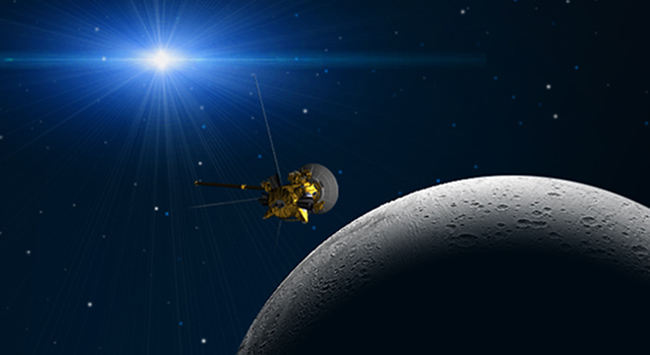
This artist's concept shows a planned flyby of Saturn's moon Enceladus by NASA's Cassini spacecraft on Nov. 30, 2010. Cassini woke from a hibernating "safe mode" Nov. 24.
Ultraviolet Light Near Saturn's North Pole
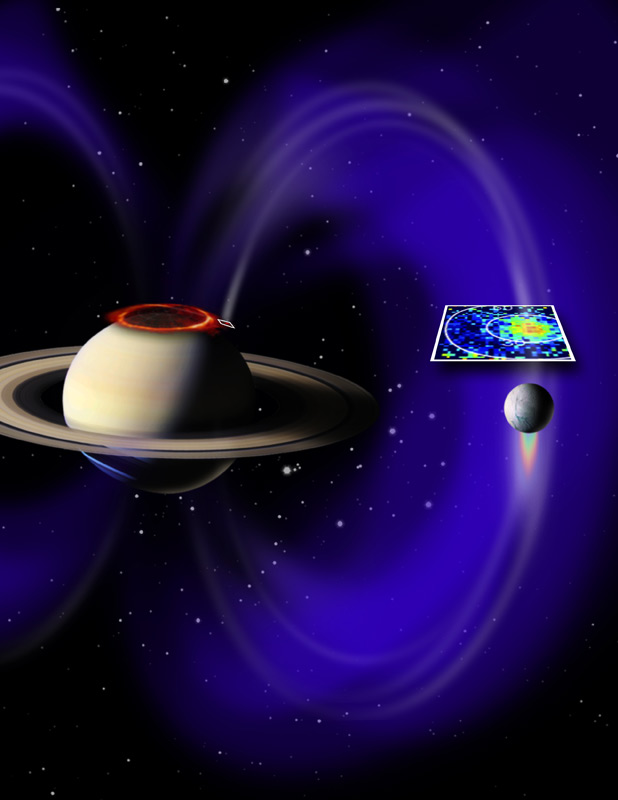
This artist's concept shows a glowing patch of ultraviolet light near Saturn's north pole that occurs at the "footprint" of the magnetic connection between Saturn and its moon Enceladus. The magnetic field lines and the footprint are not visible to the naked eye, but were detected by the ultraviolet imaging spectrograph and fields and particles instruments on NASA's Cassini spacecraft.
Saturn's Thin Rings with Moons
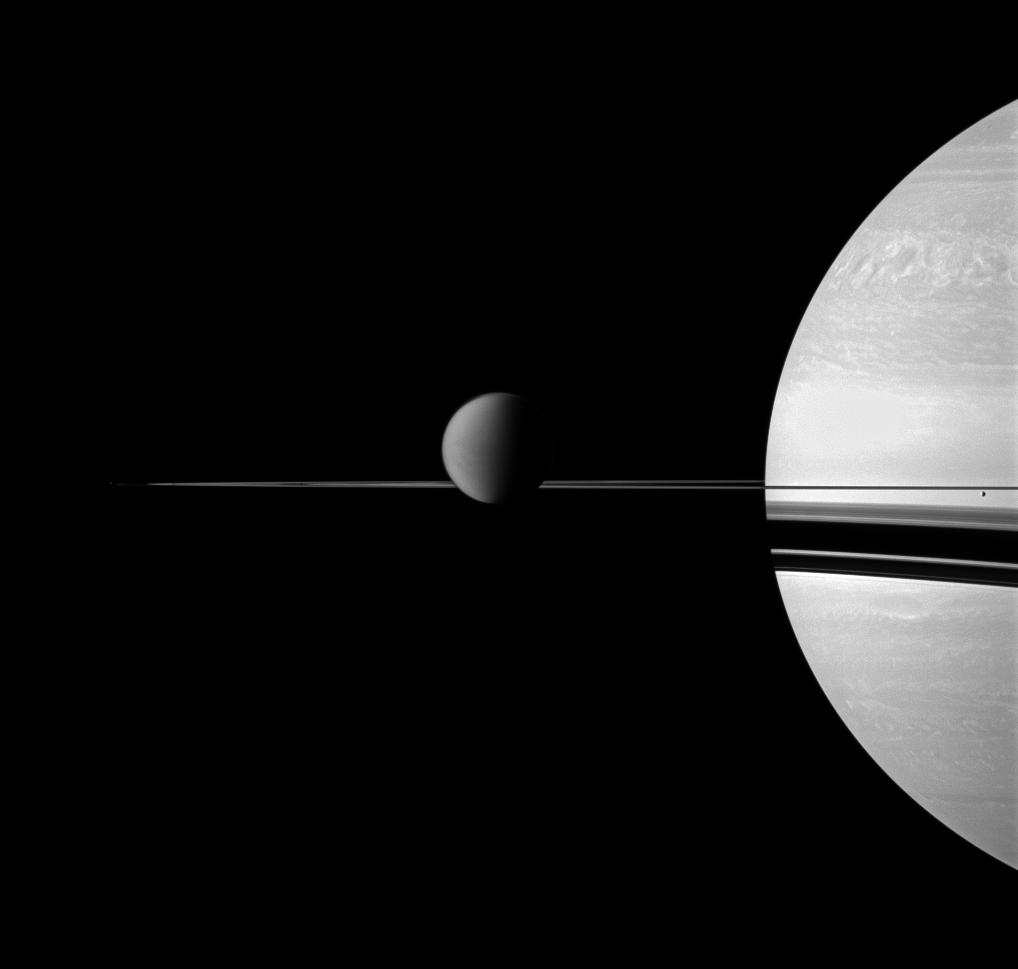
This image taken by the Cassini spacecraft highlights the thinness of Saturn's rings, only about one kilometer thick. Saturn's moon Titan looms over the thin rings, while the smaller moon Enceladus appears very tiny on the far right.
Get the Space.com Newsletter
Breaking space news, the latest updates on rocket launches, skywatching events and more!
Cassini Spacecraft Revisits Icy Saturn Moon
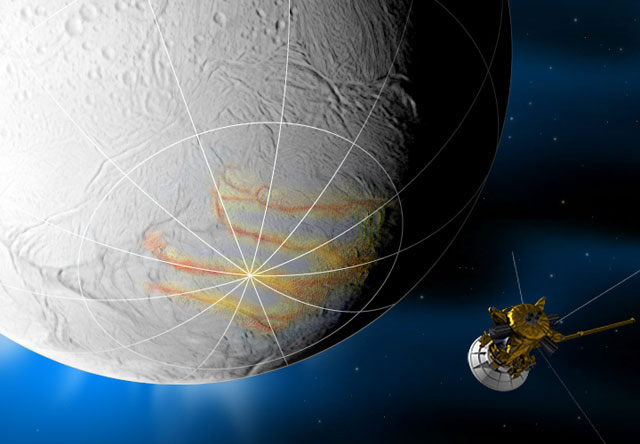
Artist's concept of Cassini flying by Saturn's moon Enceladus.
Three of Saturn's Moons
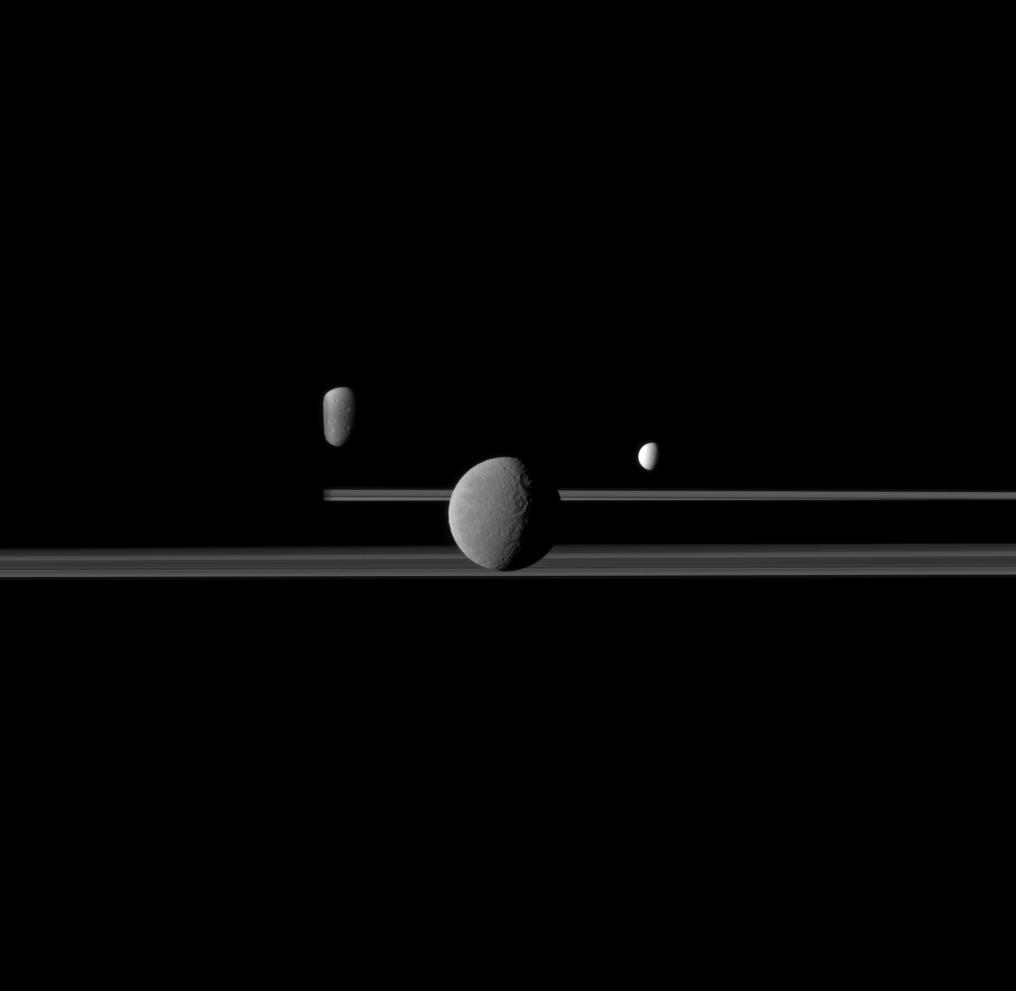
Three of Saturn's moons appear in a somber group portrait along with the northern, sunlit ringplane. Rhea (949 miles or 1,528 kilometers across) is closest to Cassini spacecraft, which took the photograph, and appears largest at the center of the image. Enceladus (313 miles or 504 kilometers across) is to the right of Rhea. Dione (698 miles or 1,123 kilometers across) is to the left of Rhea, partly obscured by Saturn. Saturn is present on the left of this image but its night side is too dark to see.
Cassini Photo of Saturn Rings and 5 Moons
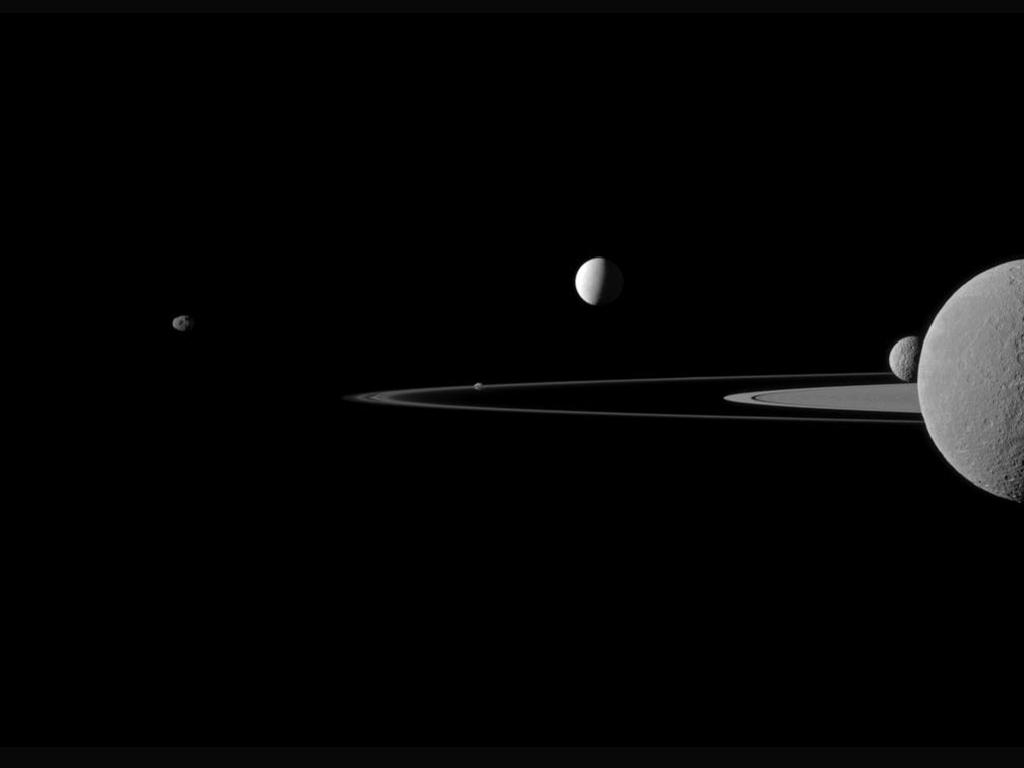
This photo, taken by NASA's Cassini spacecraft on July 29, 2011, shows Saturn's A and F rings and five of its moons. From left, the moons are Janus, Pandora, Enceladus, Mimas and Rhea.
Join our Space Forums to keep talking space on the latest missions, night sky and more! And if you have a news tip, correction or comment, let us know at: community@space.com.

Space.com is the premier source of space exploration, innovation and astronomy news, chronicling (and celebrating) humanity's ongoing expansion across the final frontier. Originally founded in 1999, Space.com is, and always has been, the passion of writers and editors who are space fans and also trained journalists. Our current news team consists of Editor-in-Chief Tariq Malik; Editor Hanneke Weitering, Senior Space Writer Mike Wall; Senior Writer Meghan Bartels; Senior Writer Chelsea Gohd, Senior Writer Tereza Pultarova and Staff Writer Alexander Cox, focusing on e-commerce. Senior Producer Steve Spaleta oversees our space videos, with Diana Whitcroft as our Social Media Editor.









